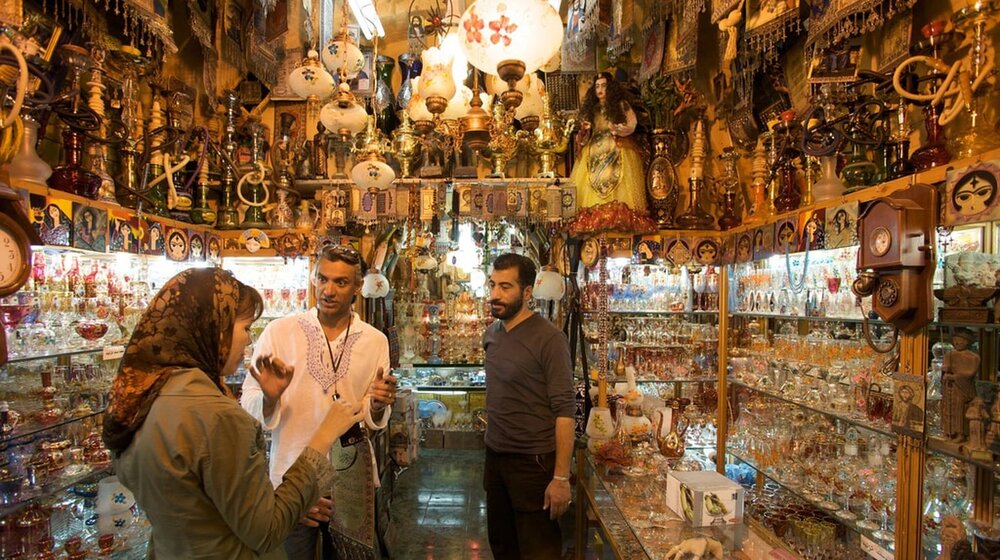10 of the best Persian souvenirs to take home

TEHRAN – Heading to Iran and don’t know what to get? Some say a trip to the ancient land would be incomplete without some nice souvenirs to bring home for yourself, family, and friends.
In addition to serving as a memento of your travels around the world, souvenirs frequently support the community's economy and let you fully experience the local way of life.
These ideas will inspire you to start looking for souvenirs you’ll love to collect. It’s nice to know that Iranians are masters of the art of gift-giving.
Sweets, nuts, and spices
The majority of Iranians have a sweet tooth, and that is why countless types of sweets are produced in every corner of the country. Those who love sweets will be fascinated by Sohan of Qom and the Gaz of Isfahan.
Besides, Iran has long been a hub for pistachio production and a top place for foreign tourists to buy it as a souvenir. Saffron is another famous souvenir of Iran, known as red gold, and is widely used in Iranian foods and pastries. Mashhad is the main city producing saffron in Iran. Rosewater is another great souvenir of Iran that is mainly produced in Kashan.
Minakari
Painting natural motifs like flowers and birds on the surface of metals, primarily copper, is an ancient art known as Minakari. Isfahan is typically where it is made.
Over the ages, the art of Minakari has fascinated many famed people, including French traveler Jean Chardin and American orientalist Arthur Pope. The prices are diverse, therefore, you can either spend a lot or little money on these special pieces of art.
Rugs
Handmade Persian carpets are sought after internationally for their delicate designs and their good quality. They are almost expensive, but they are worth every penny.
However, if you can’t or don’t want to spend much money, you can check out some other types of rugs such as Gilim (Kilim) and Gabbeh (Gabba). They are both made of natural handspun wool yarn, and the colors are created by natural plant dye. Unlike carpets, they don’t have any plans, and they’re inspired by daily events so they can’t be copied.
There are some differences between Gabbeh and Kilim carpets. These items are found everywhere in Iran, but the carpets of Tabriz and the rugs made by the Bakhtiari and Fars tribes, have higher qualities.
Turquoise
One of the Iranian mementos is turquoise. Being sturdy and hard makes it ideal for jewelry-making.
Turquoise is Iran’s national gemstone and is centered in the city of Neyshabour. So if you have a special taste in jewelry, don’t forget to check out the northeast of Iran.
Khatam
Khatam is the art of putting wooden or bone-made polygons together with special glue. It is a very delicate art and needs many specialists. The best types of Khatam are the ones with no space between the polygons.
The main centers of this art are Isfahan, Shiraz, and Tehran. Objects made of Khatam are mainly practical objects, therefore they can be very useful souvenirs.
Metalwork
Persian metalworks are famous around the world. Ghalamzani is one ancient metalwork that has a long history in Iran. It is the art of carving drawings on the surface of metals such as gold, silver, copper, and bronze using a bar and a hammer.
Ghalamzani is mostly done with dishes such as vases and big plates. Artists working in this field are mainly in Isfahan, Shiraz, Kerman, Kermanshah, and Tehran. So if you pass through the center, south, east, or west of Iran you will have the chance to see these artists and their art.
Termeh
Termeh is a cloth that is handmade with silk thread and usually used as a tablecloth. It is expensive because of its quality and special yarn and perfect design.
Nowadays, Termeh is mainly made with mechanical tools, but handmade ones are more valuable. The most beautiful pieces of Termeh are found in the city of Yazd.
Earthenware and ceramics
Pottery and ceramics are also not specific to Iran, but Persian culture and history of art have specialized in this art in Iran. Most Iranian cities have shops that sell pottery and ceramics.
The center of this art in Iran is the city of Lalejin in Hamedan, which is known as the center of pottery in the Middle East. So if you want to buy small and cheap pieces of Iranian souvenirs and you care about their Persian look, pottery and ceramics are good choices.
Handwoven textile
Each city in Iran produces its unique type of fabric. It is also observable in the traditional and local costumes of different cities. For example, Qalamzani is a special print technique used in Isfahan to create Iranian patterns on fabrics.
Pateh, which is traditionally practiced by women in Kerman, features abstract patterns on thick woolen fabrics with colored cotton sutures. Termeh comes originally from Yazd and is the art of printing paisley designs on silk fabrics.
Miniature
Miniature is the art of drawing small pictures, which were used to decorate ancient or medieval manuscripts. It is a worldwide art and has been developed in both Europe and Asia according to their different cultures. Therefore, you can see Miniature all around the world, but it is different in every country.
In Iran, Miniature continued its development as a type of painting and some contemporary artists worked in this field, such as the famous painter, Mahmoud Farshchian. There are some shops all around Iran, which sell diverse types of paintings, including Miniature. So it is one of the Iranian souvenirs accessible almost everywhere.
AFM
Leave a Comment